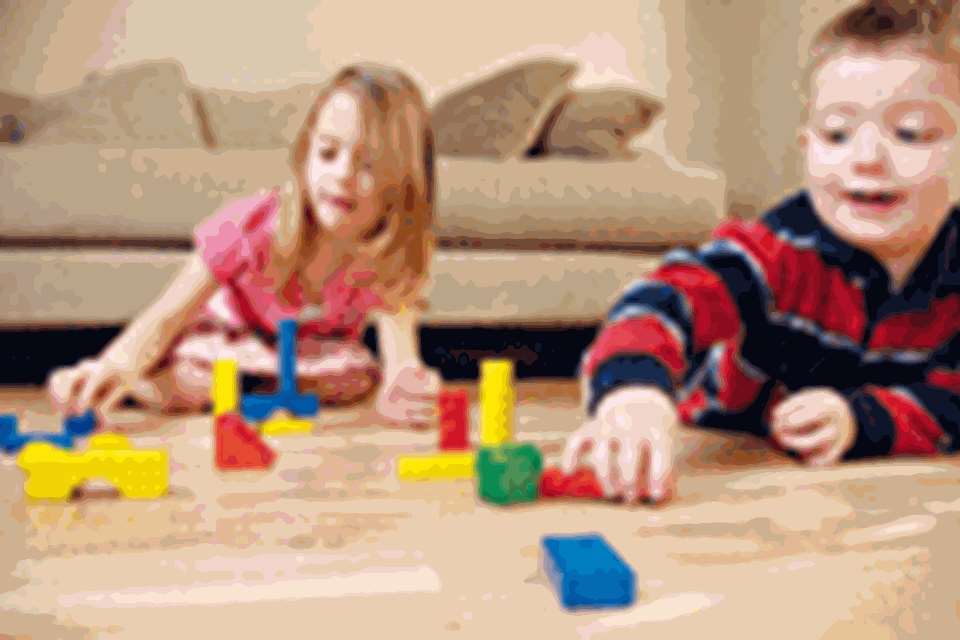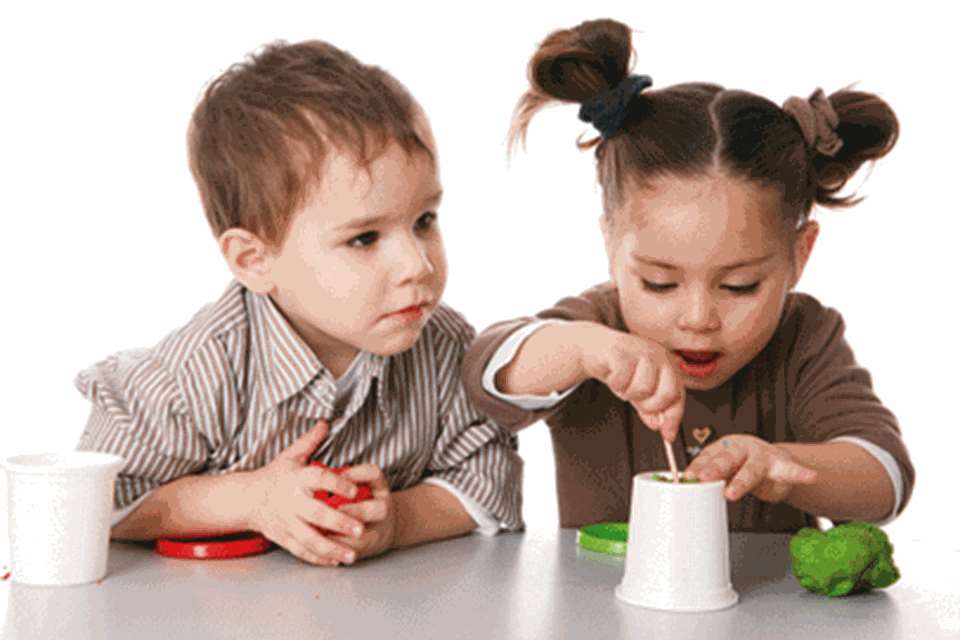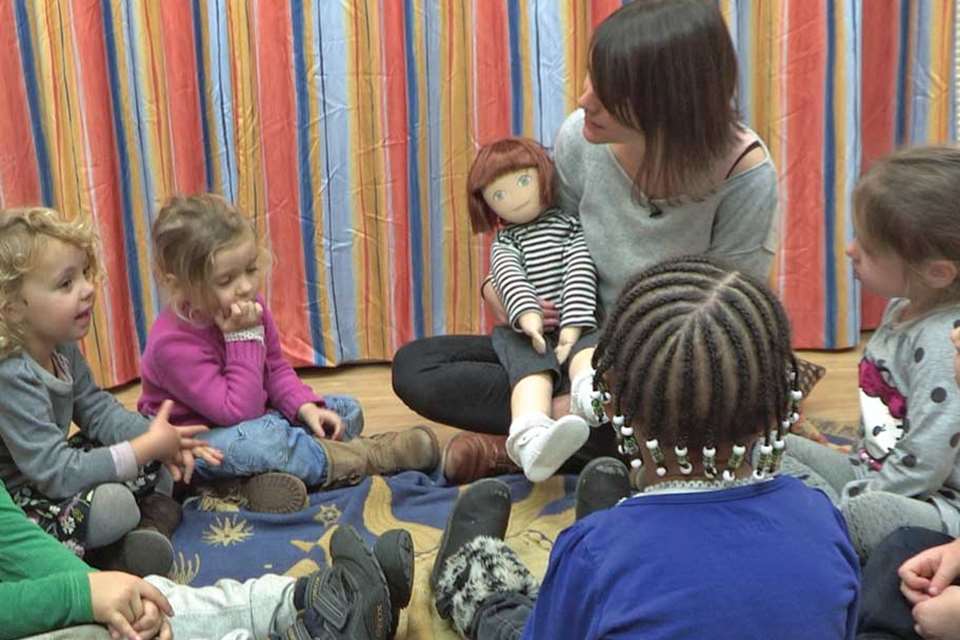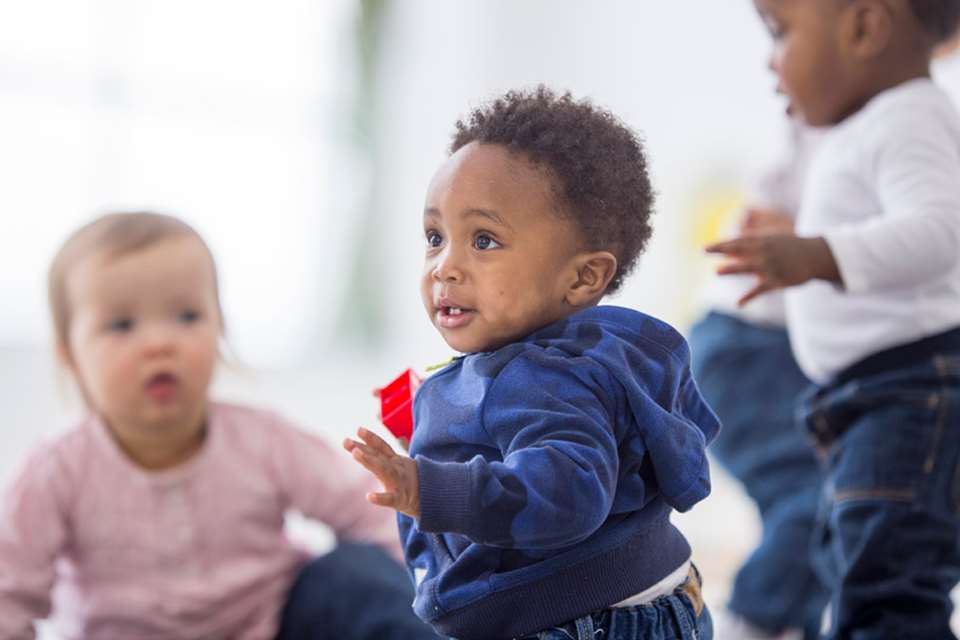EYFS Best Practice - All about…children’s friendships
Marion Dowling
Monday, August 8, 2016
Being able to make friends is easier for some than it is for others, but practitioners can help all children to form relationships. Marion Dowling explains how

In order to live and flourish in our democratic society we must learn to rub along with others. We may know of adults who are able and attractive but for some reason feel ill at ease with people. They may not have the art of easy chatter which can often oil relationships and, when they do converse, they may avoid eye contact. Such behaviour may lead them to being regarded with suspicion, and both colleagues and personal contacts may tend to avoid them. This can be a serious disability in both personal and professional life. Conversely, a network of close friends can sustain a person throughout life. Lifelong friends share a common history that is particularly precious as we get older.
The elements of social relationships are learnt early, and significant adults (family members and practitioners) recognise that they have an important task in helping young children to feel at ease, and enjoy the company of others.
DEVELOPMENTAL IMPACT
As young children reach out to other children, their early contacts have a ‘knock-on’ effect on many areas of development:
C&L Children communicate with others, initially through body language and gesture and then in conversations using words. Lev Vygotsky, the eminent Russian developmental psychologist, claimed that children learn so much by themselves, but they can learn so much more with others1.
PD Chasing and catching other children are common and enjoyable ways of forging new relationships, offering good physical scope to practise running, stopping and starting and nimbly avoiding being caught.
PSED To learn to be in a group and work together, children must learn the hard tasks of sharing and taking turns in a social context.
Although it is quite possible to coerce children into doing as they are told, this has little to do with sound moral development. Children should learn about right and wrong, and their behaviour should come from the pull of their own conscience rather than complying with requirements and parroting good manners.
In short, young children should learn to control or regulate their behaviour rather than being controlled or regulated. In the family, very young children begin to see how others they love behave and they then try to copy aspects of this behaviour.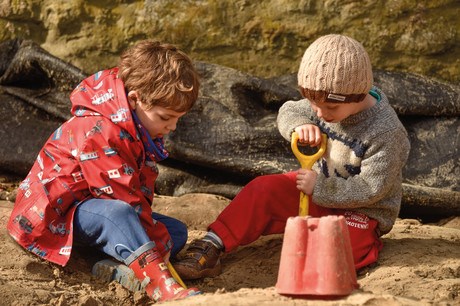
THE SOCIAL CONTEXT
In the late 1990s, Philip Zimbardo of Stanford University stated that we were entering an era of non-communication, his theory being that there was less of the personal contact and small talk that has held communities together2. Fourteen years later, psychologist Aric Sigman supports this view, referring to young children’s home lives.
Quoting research on families, he asserts that time spent on the internet by both adults and children reduces time spent on face-to-face relationships and that social engagement is rapidly disappearing3. However, although mobile phones and screen technology are now more readily available to young children, a lack of personal contact is not yet evident in early years settings. Most children are open and friendly. They chatter as they work and play and disputes that flare up are usually settled amicably.
Despite this, anecdotal evidence from early years practitioners now highlight children’s increasing reluctance to participate in social role play in favour of using screen-based media. Bearing in mind our conviction that young children learn best through real-life experiences, we should take care to limit screen time and work closely with parents to explain our reasons for doing so4.
However, by six to seven years old, many children’s social worlds are informed by TV, DVD, films, computer games and comics. At this age, children have conscious control over their imagination and will select the content that holds their interest.
Ever decreasing circles?
Young children begin their lives in the social world of their immediate family; however, as they mature, they are introduced to a wider circle of adults and their peers. For years we have accepted the need for children to be with other children of different ages, to play together and learn how to live with others. This occurred naturally where children of all ages had more freedom to play together in the streets. Nowadays, with working parents, increased road traffic and awareness of child protection, in a less safe world young children are denied these freedoms and spend more time with children their own age mainly when they attend nursery settings. Rubin reminds us that young children probably remain in age-separated groups longer than they have done at any point in history5.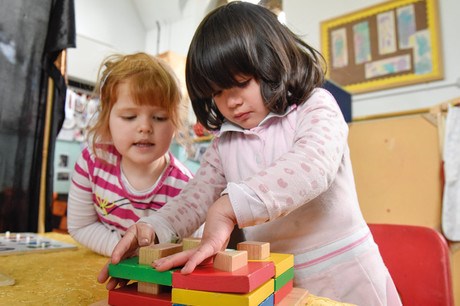
DEVELOPMENT OF FRIENDSHIPS
Learning with and from their peers starts early
Babies are primed to be social and to communicate. Within a very short time they are ‘reading’ eye contacts, facial and body gestures and the tone of voice of those significant people who live with them. Social relationships with peers develop very early outside the family.
Babies will respond to other babies and from a few weeks old are able to use sound, gazes and touches (later they exchange objects) to develop attachments to other children6.
From this early start other children continue to be important. Infants observe with interest the play of other children and from around 15 months may enjoy being alongside others. From about 30 months, they enter a group and when they are accepted they start to suggest ideas and join in with what others are doing7.
Friendships in school
As children develop and mix with other children in nursery, then school and in other social situations, they develop a range of interpersonal skills that will form the foundations of their personality later in life. One major aspect of making a transition to nursery and school is learning to be with others, facing the challenges of fitting into peer-group activities, making and maintaining a friendship, and coming to terms with losing a friend.
By three and four years old, children are really keen to play with other children. The well-adjusted four-year-old should be able to negotiate several peer relationships with ease. Judy Dunn, when researching children’s friendships, asked a group who had been in the Reception class for six weeks what advice they would give to a child who was about to start school. One boy gave a straight answer – ‘get a friend’8. The more experiences that young children have of making contacts and forming relationships in their play, the more they will gain from it.
Case study
Keira brought into nursery her new teddy which she had received for her fourth birthday. She proudly showed it to the other children and became upset when Lewis, a new three-year-old, grabbed it from her. The other children returned the bear to Keira, who was later observed offering to lend it to Lewis. Keira explained to her teacher that Lewis was only little and she knew that he really wanted a bear like hers.
Comment
Keira’s kind response showed her mature ability to recognise, empathise and respond positively to Lewis’s envy and his longing for a similar toy.
Point for reflection
As the practitioner, how might you use Keira’s response to encourage generous behaviour in the other children?
Not all children make friends naturally
Studies suggest that the best predictor of adapting to adult life is not to do with cognitive achievements but rather with the success with which children get along with other children. Those who are unable to sustain close relationships with their peers are seen to be extremely disadvantaged9.
It’s tempting to believe that by providing opportunities for young children to be together, they will happily play with one another. Of course, most children will do so easily but some avoid social relationships or find them difficult.
Young children are equipped differently to make friends and have friendship preferences. If by four years a child hasn’t learnt to relate to other children, then this can lead to great unhappiness. Nurseries and schools are social communities. If a child is condemned to attend school daily without the support of friends, they are unlikely to learn well: studies show that a lack of friends can ultimately lead to children refusing to attend school10.
Ramsey suggests that children’s social behaviour can be grouped into four categories11:
Popular – Children are usually very capable, and more intellectually, socially and emotionally mature than their peers. It is also a sad truth that popular children are often more physically attractive and this is particularly noticeable with little girls
Rejected – Children may show aggressive or withdrawn behaviour. They may retaliate angrily or avoid other children
Neglected – Children appear to take little part in the social life of the group and are often quite content with their own company
Controversial – Children are described as having a major impact on the social group; that is, socially and intellectually talented but often in trouble for aggressive behaviour and breaking rules. Although these children are often group leaders, they are regarded with caution by some of their peers.
Although it can be helpful to recognise these behaviours, Ramsey admits that these are crude descriptors and many children may be well adjusted socially but unable to fit into any of these categories.
It’s useful, however, to distinguish between ‘aloneness’ as a matter of choice and social isolation. ‘Neglected’ children may have all the social skills to communicate and play with others but may prefer to be self-sufficient and spend time alone.
‘Rejected’ children are the ones who lack strategies for joining in play activities with others, and may become social isolates although this is not their choice. Basically, all children want to be liked but they can be rejected if they constantly withdraw from others or behave in anti-social and aggressive ways. When these children try to make friends, their overtures to others are either too timid or over-effusive and other children ‘back off’.
Like younger children, those who have been rejected spend a considerable amount of time on the sidelines observing children playing but without the strategies for joining in. If they manage to become involved, they are necessarily inexperienced players and need the direction from other children. This can mean that they are devalued in the group and are very often the individuals who end up in role play being, for example, the dog or baby12. Gussin Paley vividly describes her concern about the social exclusion that operated in her kindergarten class when some children announced to others, ‘You can’t play’13.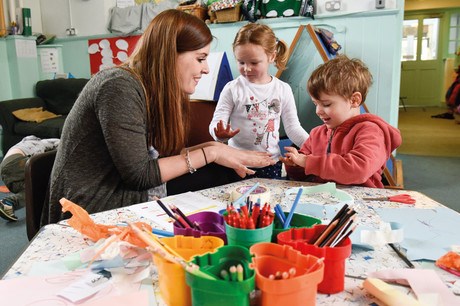
MONITORING CHILDREN’S SOCIAL SKILLS
Most practitioners are broadly aware on a day-to-day basis of their children’s social abilities. Others dig more deeply; they observe closely a child’s play and activity to acquire a properly informed and more detailed picture.
The Social Play Continuum developed by Pat Broadhead14 provides a useful tool for observing and assessing children’s social play. It highlights four domains or areas of progress in play.
The emphasis in the observations is on the children’s actions and use of language, with a stress on continuity and progress as play moves across the four domains.
One helpful sign of progress is the impact on arguments in play: for example, in the earlier domains an adult is often called upon to resolve a dispute which inevitably halts the play; when children mature and play more co-operatively, they learn to resolve their disputes and start to regulate their actions rather than to call on an adult to intervene. This continuum:
- provides a clear structure for observations
- supports practitioners to assess the level of social play in a particular area of provision
- encourages them to reflect on an action that helps children progress into a higher area of play.
PRACTICAL SUGGESTIONS
Learn more about children’s relationships
Note the patterns of young children’s friendships to find out who are the most popular and who are the children having difficulties in making relationships.
Observe children in role play and identify the leaders, followers and those on the sidelines. Note friendship patterns in different play activities, which children are constantly together, which children share similar interests (schema) and how they share this in their constructions, drawings, paintings, movements and story-making.
Support children’s friendships
Lie or sit babies alongside one another and offer treasure baskets for them to share.
Consider how the outside environment encourages children to play together – for example, the provision of shared seating or wheeled toys for two children to ride.
Model caring and sharing skills in role play – for example, comforting and cuddling a sad doll or sharing a cake fairly among toys.
Encourage infants to learn from older children; seat two-year-old children next to three- and four-year-olds at lunchtime and note how quickly they learn to use cutlery and serve themselves food.
Give new children ‘a special friend’ on their arrival at nursery. Encourage the ‘friend’ to take real responsibility for showing the new child the nursery routines and helping them understand the pattern of the day.
Place a large stuffed animal in a quiet corner of the nursery and introduce it as a friend to anyone who is feeling lonely.
Resource indoor and outdoor areas with recycled and found materials for den play – in order to build a den, children need to communicate, negotiate, come to joint decisions and help one another in practical tasks.
Help children to appreciate the effect of external events on friendships
Support children whose friends move away with their families.
Encourage two friends to make a gift by which they remember one another – for example, a photo.
Help children to accept that although they will feel lonely if they are parted from their friend (on account of illness or a family holiday), this is a time to try out new friendships.
Encourage a child to keep a simple scrapbook of nursery activities to give to a friend who is in hospital.
Suggest that children think of their friends while they are on holiday and send them a postcard.
Provide specific support for children who lack friendship skills
Be a play partner to an isolated child and gradually encourage them to join in group play with you.
Work with small groups and use puppets and miniature dolls to enact scenarios and provoke discussion. Help children to understand relationships. Use events and comments that occur in the nursery as a starting point – for example, taking turns, sharing things, being kind, and ensuring that no-one is lonely.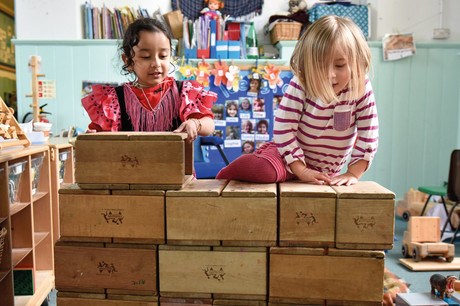
REFLECTION
How well does your environment (inside and outside) encourage children to interact with one another?
What aspects do you need to develop?
REFERENCES
1. Vygotsky, LS (1962) ‘School instruction and mental development’ in Donaldson, M (1978) Children’s Minds. Fontana
2. Zimbardo, R (1997) quoted in The Guardian, 22 July 1997
3. Sigman, A (2011) in House, R (Ed) Too Much, Too Soon?. Hawthorn Press
4. Campaign for a Commercial-Free Childhood and the Alliance for Childhood (2012) Facing the Screen Dilemma: Young Children, Technology and Early Education. New York Alliance for Childhood
5. Rubin, Z and Thomson, A (2003) The Friendship Factor. Penguin
6. Goldschmeid, E and Selleck, D (1996) A Framework to Support Children in their Earliest Years. DfES
7. Early Education (2012) Development Matters in the Early Years Foundation Stage
8. Dunn, J (2004) Children’s Friendships: The Beginnings of Intimacy. Blackwell
9. Hartup, WW (1992) Having Friends, Making Friends, and Keeping Friends. ERIC Clearinghouse on Elementary and Early Education
10. Parker, J and Asher, S (1987) ‘Peer relations and later personal adjustment: Are low-accepted children at risk?’. Psychological Bulletin, 102, 357-389
11. Ramsey, PC (1991) Making Friends in School. Teachers College Press
12. Scarlett, WG (1983) ‘Social isolation from age mates among nursery school children’ in M Donaldson (Ed) Early Childhood Development and Education. Blackwell
13. Paley, VG (1992) You Can’t Say You Can’t Play. Harvard University Press
14. Broadhead, P (2004) Early Years Play and Learning: Developing Social Skills and Co-operation. Routledge


